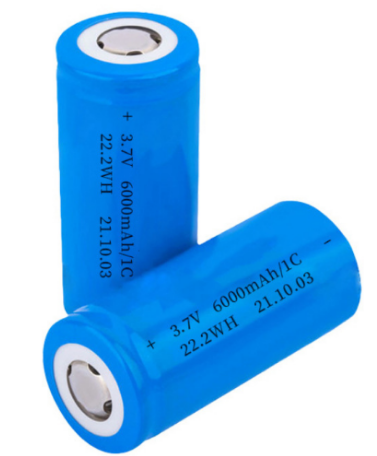What Is The Difference Between Lithium Iron Phosphate And Lithium Ternary Batteries?
What Is The Difference Between Lithium Iron Phosphate And Lithium Ternary Batteries?
Lithium iron phosphate is resistant to overcharging and over-discharging, and it can recover more than 80% when it is overcharged to 0 for a short period of time. Lithium ion overcharge to 2.6V will produce irreversible damage.
Lithium iron phosphate is resistant to overcharge to 100% will not catch fire and explode. Lithium ion over 4.35V will be inflated and bulging.
Lithium iron phosphate puncture does not fire and explosion. Lithium ion will. (now relatively safe)
Lithium iron phosphate is resistant to high temperatures, more than 200 degrees after the recovery can still be used. Lithium ion can not.
Lithium iron phosphate can discharge high current, 10C20C above can, lithium ion can only 3 ~ 5C discharge
Above all, lithium iron phosphate is the safest of the lithium batteries.
However, lithium iron phosphate energy density is not as great as lithium ion batteries. The voltage is also relatively low. Because of its large discharge characteristics, it is mainly used in power supply, such as electric vehicles, aeromodels and so on. And lithium-ion capacity, mainly used in the civilian consumer field. So look at what to be used in what aspects of the choice of different batteries!
Lithium iron phosphate and ternary which is good, lithium iron phosphate and ternary lithium difference
Lithium-ion batteries after 30 years of development, specific energy, specific power and other performance has improved greatly, has been successfully applied to the car. Restricted by the specific energy of the battery, pure electric vehicle range is limited, is a bottleneck to constrain the development of foreign automobile manufacturers in the near future planning to develop hybrid vehicles. Currently applied to lithium-ion battery anode materials are mainly lithium manganate, lithium iron phosphate, lithium cobaltate, ternary materials and other materials, currently used in the power type battery anode is mainly used in lithium iron phosphate and ternary two materials.
Ternary material batteries and lithium iron phosphate material batteries in not more than 10C charging, constant current charging capacity/total capacity ratio is not obvious gap, more than 10C times the rate of charging, lithium iron phosphate battery constant current charging capacity/total capacity ratio is small, charging multiplier, constant current charging capacity/total capacity ratio and ternary material batteries the more obvious the gap, this is mainly related to the lithium iron phosphate in the 30% ~ 80% SOC is voltage This is mainly related to the lithium iron phosphate at 30% to 80% SOC is the voltage change is small, such as the negative electrode using soft carbon or hard carbon, lithium iron phosphate battery charging rate can reach the level of ternary batteries.
Ternary material battery cycle 3900 times the remaining capacity of 66%, lithium iron phosphate battery cycle 5000 times the remaining capacity of 84%, cycle life than the ternary material battery, lithium iron phosphate battery advantage is obvious. According to the remaining capacity / initial capacity = 80% as the end point of the test, the current ternary material battery laboratory 1C cycle life of about 2500 times, lithium iron phosphate battery laboratory 1C cycle life of more than 3500 times, part of more than 5000 times.
Discharged at 55 ℃, ternary material batteries and lithium iron phosphate at room temperature compared to the discharge capacity are no difference, -20 ℃ discharge, ternary material batteries discharge capacity / room temperature capacity ratio is 15% higher than lithium iron phosphate batteries.

Through the production of the same structure of the battery, the advantages and disadvantages of ternary materials and lithium iron phosphate materials in the HEV battery application, ternary materials in the battery specific energy, specific power, large times the rate of charging, low-temperature performance and other aspects of the advantages of cycling performance is the advantage of lithium iron phosphate material is obvious, in terms of safety lithium iron phosphate battery is also better than ternary materials. In the selection of batteries can be selected according to different uses, such as bus space is larger, the battery specific energy and power requirements are relatively low, you can choose lithium iron phosphate material batteries, to play the characteristics of its good cycling performance, sedan space is limited, the battery dosage is small, the choice of high-energy and high-power ternary material batteries is more appropriate.
At present, the lithium iron phosphate battery energy density has basically reached the theoretical extreme, while the energy density of ternary batteries there is still a lot of room for improvement. Comprehensive capacity density, power density, cycle life, low-temperature performance, etc., ternary battery performance is better than lithium iron phosphate battery.

 English
English
RV Power Battery PACK Solution
detailed description of the power battery PACK solution scheme for RV: 1. Battery type selection 2. Battery capacity and voltage 3. PACK structure design 4. Thermal management design 5. Safety design 6. Performance optimization
Read MoreLithium Iron Phosphate Battery Cycle Life and Factors Affecting Life
As a leader in lithium battery technology, lithium iron phosphate batteries are highly regarded for their excellent performance and long life.
Read MoreLithium Battery And Lead-Acid Battery Transport Un Number Description
Lithium battery packs are classified in Class 9 dangerous goods - miscellaneous dangerous substances, the United Nations number is UN3080, UN3081, UN3090, UN3091, and the transport packaging category is Class II
Read More